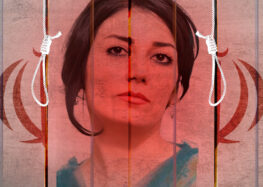In the face of one of the world’s most oppressive regimes, Iranian women are rising as digital warriors. While the streets of Iran continue to witness resistance and defiance, an equally powerful revolution is unfolding in the digital space. Armed with smartphones, VPNs, and sheer courage, women are fighting online censorship, exposing human rights violations, and rallying global support.
In a country where internet access is routinely restricted, and the Islamic Revolutionary Guard Corps (IRGC) deploys advanced surveillance and cyber tactics to crush dissent, the online presence of Iranian women has become one of the regime’s most formidable challenges.
This analysis delves into:
• The digital tactics used by the IRGC to suppress voices.
• The innovative strategies Iranian women are using to fight back.
• The impact of their digital activism.
• The role of global tech and advocacy communities in supporting this resistance.
1. The IRGC’s Digital Grip on Iran
A. Internet Censorship and Surveillance
The IRGC, through the Cyber Defense Command, controls much of Iran’s digital infrastructure. They:
• Regularly impose nationwide internet shutdowns, especially during protests.
• Block or slow down platforms like Instagram, WhatsApp, Twitter, and Telegram.
• Monitor keywords, hashtags, and private messages to identify and arrest dissidents.
• Use deep packet inspection (DPI) technology to track encrypted data.
In 2022, during the peak of the “Women, Life, Freedom” protests, over 75% of internet access was cut in key cities. The aim: to silence and isolate activists.
B. Targeting Women Online
Women who post content considered “immoral” or “anti-regime”—such as dancing videos, unveiled selfies, or protest slogans—are often:
• Tracked, harassed, and arrested.
• Forced to make public apologies under duress.
• Subjected to online smear campaigns.
• Their accounts are hacked or flooded with threats.
The IRGC sees female digital presence as a direct challenge to their ideological rule.
2. Acts of Digital Defiance by Iranian Women
A. Breaking the Firewall
Iranian women have become experts at circumventing censorship using:
• VPNs and proxy servers to access blocked platforms.
• Decentralized networks like Mastodon when centralized ones are shut down.
• Tor browser for anonymous communication.
Even during full blackouts, some activists used satellite internet tools and offline data-sharing apps to continue communicating.
B. Viral Campaigns: Hashtags with Power
Digital campaigns led by Iranian women have gone viral globally:
• #MahsaAmini — After her death in IRGC custody, this hashtag was viewed billions of times worldwide.
• #WomenLifeFreedom — Became the banner of Iran’s feminist revolution.
• #MyStealthyFreedom — Founded by journalist Masih Alinejad, this movement encouraged women to share hijab-free photos online.
• #FreeIranianWomen — Aimed to spotlight political prisoners and demand international action.
These campaigns helped bypass regime narratives, exposing the truth directly to the world.
C. Citizen Journalism and Whistleblowing
Iranian women have filled the gap left by state-censored media:
• Posting live footage of protests and police brutality.
• Sharing testimonies from inside prisons.
• Smuggling documents or messages from political prisoners.
These acts carry immense risk but have been crucial in holding the regime accountable.
D. Online Solidarity Networks
Women in Iran and the diaspora are forming virtual safe spaces for:
• Mental health support for survivors of state violence.
• Legal advice for those at risk of arrest.
• Digital training in cybersecurity, encryption, and content protection.
This cyber sisterhood provides emotional resilience and technical tools to outmaneuver IRGC tactics.
3. The Power and Impact of Digital Resistance
A. Global Awareness and Mobilization
The digital defiance of Iranian women has:
• Made Iran’s struggle a global feminist cause.
• Pressured world leaders and institutions to speak out.
• Inspired solidarity protests in major cities across Europe, North America, and Australia.
• Influenced the EU and U.S. to impose sanctions on Iranian officials.
B. Shifting the Narrative
Through platforms like Instagram and Twitter, Iranian women have:
• Countered state propaganda.
• Humanized the cost of repression by sharing personal stories and images.
• Educated the world on the realities inside Iran.
Their visibility online has challenged the IRGC’s monopoly on “truth” and redefined global understanding of Iranian resistance.
4. The Risks They Face
Despite their resilience, digital activism in Iran comes with extreme dangers:
• Arrests of users for simple online posts.
• Torture of women who organize or share protest content.
• Family members used as leverage to silence outspoken women.
• Bans on social media apps leading to isolation from the global community.
Women like Niloufar Hamedi, Elahe Mohammadi, and Sepideh Gholian have faced imprisonment, threats, and brutality for their online roles in covering or supporting protest movements.
5. The Role of the Iranian Diaspora
Iranian women abroad play a vital role in amplifying voices from inside:
• Creating mirror accounts to repost content when originals are taken down.
• Launching digital petitions, videos, and campaigns to maintain pressure.
• Organizing Twitter storms, YouTube streams, and international panels to raise awareness.
The diaspora acts as a lifeline, keeping the digital resistance alive and visible.
6. How the Global Tech Community Can Help
A. Digital Tools and Access
• Provide reliable VPNs with end-to-end encryption.
• Ensure access to secure communication apps like Signal and Element.
• Develop apps that work offline and are resistant to censorship.
• Expand access to satellite internet solutions (e.g., Starlink) during blackouts.
B. Content Protection and Safety
• Platforms should implement stronger protections against account hacking and data leaks.
• Flag and remove IRGC bots/trolls used for harassment.
• Preserve protest content through digital archiving tools to prevent erasure.
C. Visibility and Amplification
• Social platforms should amplify credible Iranian voices, especially women.
• Avoid suppressing posts or hashtags related to #MahsaAmini, #WomenLifeFreedom, and #IranProtests.
• Partner with NGOs to verify and protect activist accounts.
Conclusion: A Revolution in Pixels and Courage
The battle for Iran’s freedom is not just taking place in streets and squares—it is being fought in comments, hashtags, videos, and encrypted chats. Iranian women have turned the internet into a weapon of resistance, and despite censorship, they continue to outsmart, outvoice, and outlast the IRGC’s digital repression.
“They can shut down the internet, but they can’t shut down our will.”
These women are not just fighting for Wi-Fi—they are fighting for voice, truth, and liberty. The world must recognize that digital defiance is real resistance, and Iranian women are leading it with unmatched bravery.
Join Our Newsletter!
Stay informed with the latest updates, news, and ways to take action in the fight for justice and global security. Sign up now to get updates delivered straight to your inbox!




